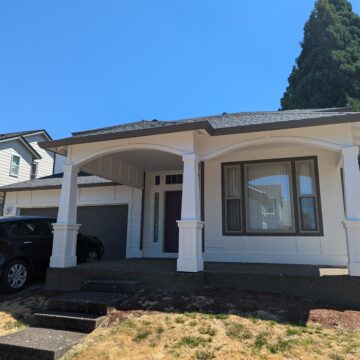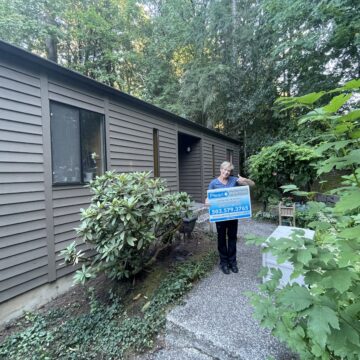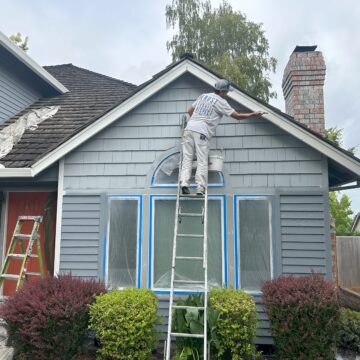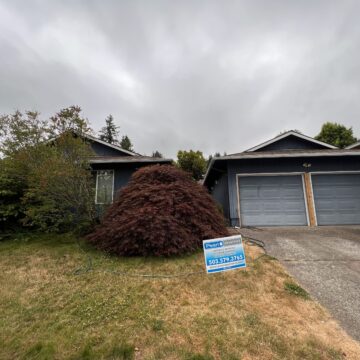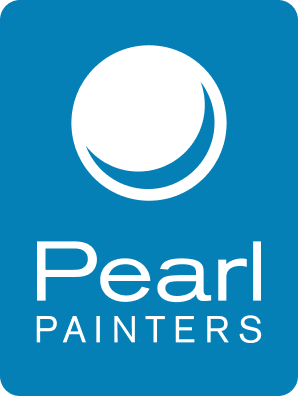When we paint a home’s exterior, the work starts long before we open the first can of paint. At Pearl Painters, we know that proper surface prep is what separates an exterior paint job that lasts from one that peels and fades too soon. Whether we’re staining a weathered front porch or tackling a full exterior repaint, one thing always comes first: thorough cleaning.
Here’s how we clean exterior surfaces before painting, and why it matters.
Pressure Washing vs. Hand Washing
One common question we get from homeowners is: Will you pressure wash, or do you hand wash? The answer depends entirely on the surface and its condition. Plus, we have a third option that isn’t as well-known to most homeowners: soft washing.
We assess every home carefully and choose the cleaning method that delivers the best result without causing damage.
Option 1: Pressure Washing
Pressure washing is our go-to method for most exteriors. It’s fast, effective, and removes years of dirt, dust, pollen, and mildew. Pressure washing is ideal for:
Siding (like HardiePlank, vinyl, and wood)
Concrete foundations and walkways
Of course, we do make sure to adjust the pressure and spray tips according to the needs of the particular surface we’re cleaning.

What exactly is soft washing? In summary, it’s when we wash a surface using low-pressure equipment (such as a hand pump) to deliver a chemical solution that targets the issues of the specific area – such as mildew.
Option 2: Soft Washing
Soft washing is great for delicate surfaces that can handle cleaning products but not the pressure from a pressure washer. When there is a chance of damage from high water pressure, soft washing is the way to go.
These doors required a careful approach to cleaning before they were painted to look as good as new by our team!
How We Protect Your Home During Washing
Option 3: Hand Washing / Scubbing
Hand washing or hand scrubbing is our go-to method when dealing with surfaces that are delicate, require some agitation, but cannot handle high-pressure washing. This often includes wood siding that is soft, weathered, or not well sealed.
We also use this method when a home has known problem areas that leak water into the attic or interior due to how it was originally built. Many homeowners already know of these spots from previous experiences—where pressure washing caused leaks or interior damage. In these cases, we avoid risk by using a simple, low-pressure approach: a garden hose, a bucket, and a scrub brush.
To ensure effective cleaning, we pair this gentle method with specialized cleaners. This approach allows us to safely and effectively clean even the most vulnerable parts of your home, without risking damage from high-pressure equipment.
Pressure washing and soft washing may sound a little intense – and they can be. But our team takes every precaution to keep your home safe in the process.
Before we begin washing of any kind, we:
- Make sure all windows and doors are closed
- Ensure all pets are safely indoors
- Cover electrical outlets and fixtures as needed
- Tape off any areas that shouldn’t get wet
- Move or cover delicate landscaping and outdoor furniture
- Pre-wet adjacent surfaces with clean water and then clean water rinse post chemical use.
- Check for open gaps near doors, windows, or vents that could allow water intrusion
After washing, we walk the property to make sure everything is as it should be, and ready for the next steps in the painting process.
Cleaning Solutions & Chemical Safety:
When we use cleaning chemicals, we always take extra precautions to protect surrounding surfaces and landscaping. Before applying any product, we pre-wet all adjacent areas that are not being refinished—including glass windows, decks, plants, and grass—with clean water. Once cleaning is complete, we rinse these same areas again to ensure no residue is left behind.
Why pre-wet?
Applying chemicals to dry surfaces increases the risk of staining or damage. For plants especially, pre-wetting saturates the leaves and soil so they absorb clean water first. This prevents them from drawing in any cleaning agents that may splash onto them. A final rinse ensures any incidental contact is harmless and fully washed away.
We’ve also seen situations where cleaning chemicals were allowed to dry on surfaces—especially in direct sunlight—causing visible damage or staining. That’s why we apply cleaners methodically, never letting them sit too long, and always rinsing thoroughly before they have a chance to dry out or bake into the surface.
Our Preferred Cleaning Products
We use two trusted solutions depending on the needs of the surface and the severity of staining:
-
Krud Kutter House Wash
A biodegradable, non-toxic cleaner that safely removes dirt, mold, mildew, algae, and general grime—without using bleach. It’s safe for use around pets, plants, and on most exterior surfaces including wood, vinyl, masonry, and stucco. -
Jomax House Cleaner and Mildew Killer
Ideal for treating mildew and organic stains, especially in shaded or damp areas. When mixed with a light bleach solution, it kills mold spores and removes tough stains with minimal scrubbing.
Both products are effective and safe when used correctly—and paired with our careful application methods, they help ensure a clean home without unwanted side effects.
Our team will always inform you ahead of time exactly what the plan is for cleaning the exterior of your home. It’s all part of our thorough proposal process when we first meet.
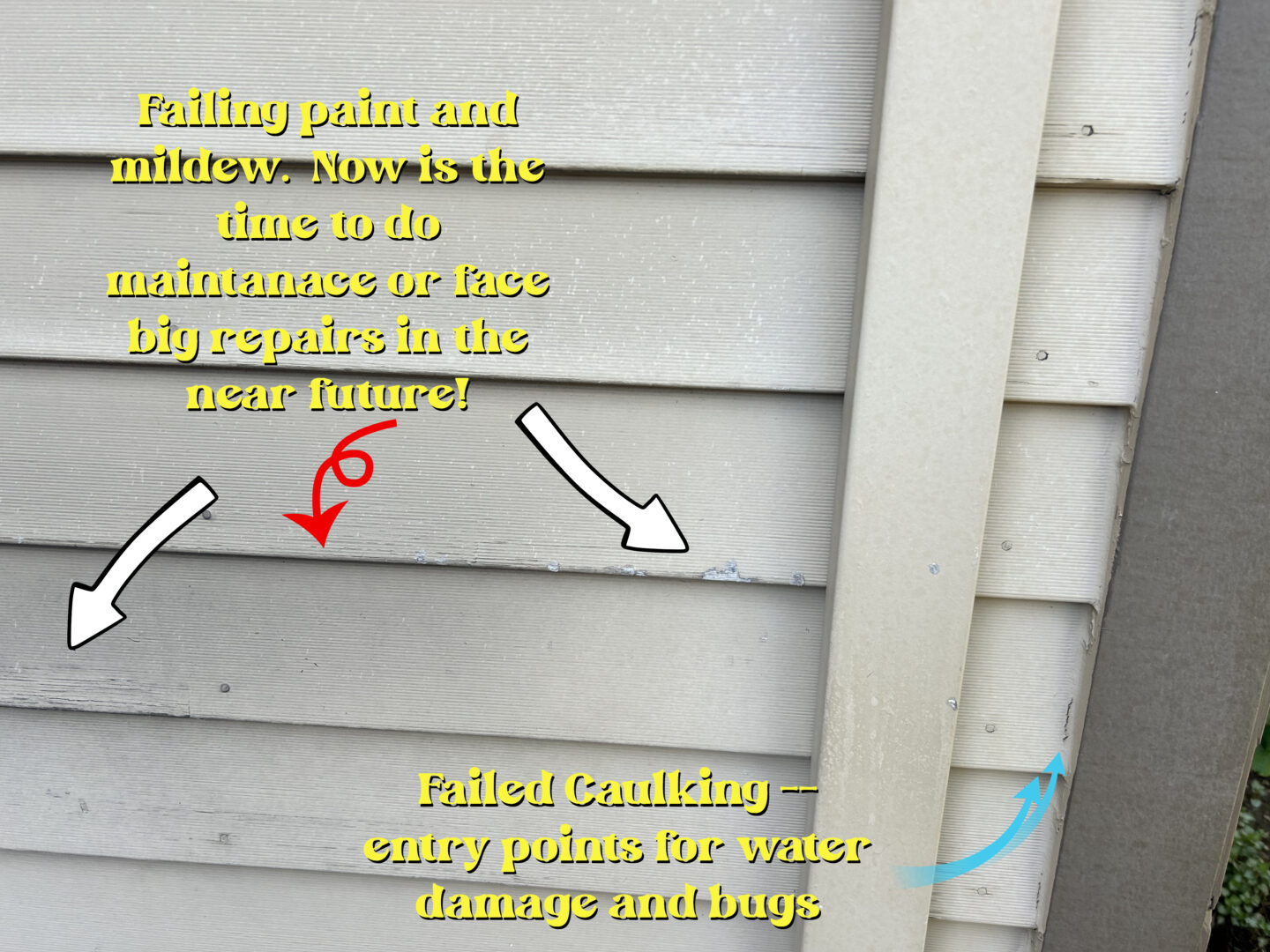
Mildew Removal & Prevention
Mildew is a big issue in the Pacific Northwest. Between the rain and shaded areas, exterior surfaces can become a breeding ground for mildew, algae, and mold. If not properly treated, mildew will bleed right through the paint and destroy the finish.
We tackle mildew with:
Mild detergents or mildew-killing cleaners (when necessary)
Scrubbing where needed for stubborn spots
A thorough rinse and dry to ensure no residue remains
Can mildew come back after painting? It can, but we do everything we can to stop it. That includes:
Removing the mildew completely before painting
Using high-quality, mildew-resistant primers and paints
Ensuring surfaces are dry and sealed properly before applying paint
Paint doesn’t stick to mildew, and we don’t cut corners.
The quality of your paint job starts long before a brush or sprayer touches your siding. Cleaning and prepping the surface is the foundation for everything that follows, so we take it seriously.
At Pearl Painters, we don’t rush prep work or use shortcuts. Every home is different, and our crew is trained to assess, clean, and protect yours with the right method for your surfaces.
Thinking about repainting your home’s exterior? We’d love to walk you through our full process from cleaning and prep to final walkthrough. Reach out today to schedule a consultation or learn more about our exterior painting services. Let’s make your home look its best, from the ground up.


